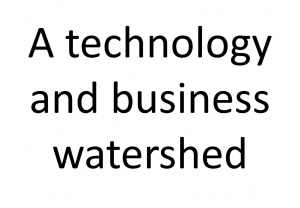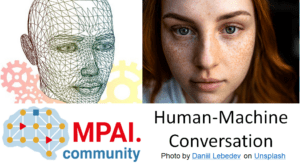In quite a few of my articles on this blog I have described how well MPEG has managed to create generic standards for the media industry, how many new standards keep on being produced to support the expansion of the media business and how much the expansion has brought benefits to that industry.
The first part of the title, however, reminds us that MPEG is an organisation created by humans and populated by humans. As MPEG is not and cannot be perfect, it is appropriate to ask what is the MPEG level of performance.
Being able to constantly answer the performance question is important for MPEG because there must be a system in place that can be used to constantly monitor the performance of the group. Even if performance is excellent today, there is no reason to rest because MPEG may very well not be excellent tomorrow.
The problem in trying to answer the question of MPEG performance is that MPEG is not a company, but a standards committee. What are the Key Performance Indicators (KPI) of a standards committee like MPEG? For sure MPEG is “successful” (it does provide useful standards), but is it successful enough compared to the possibilities that its mission offers?
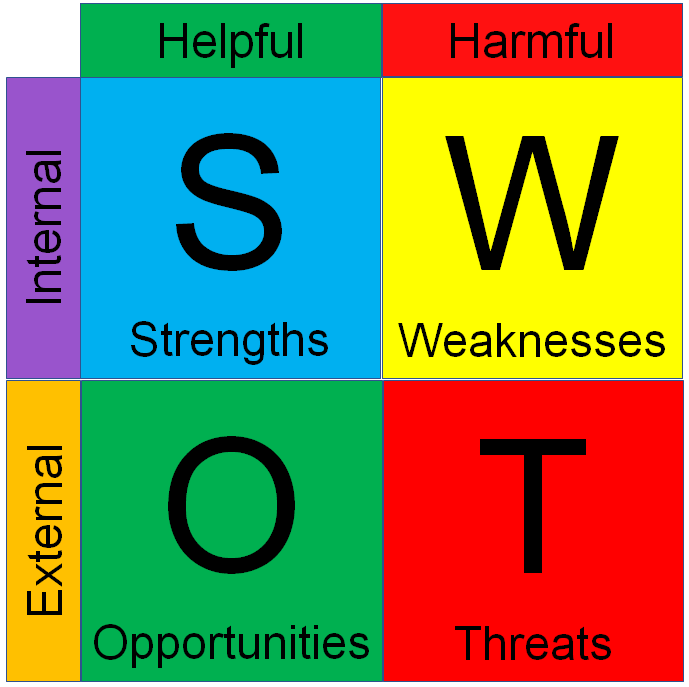
In this article I will try and answer the question of MPEG adequacy to its mission by applying the SWOT (Strengths-Weaknesses-Opportunity-Threats) methodology to a set of parameters: Context, Scope of standards and Business model.
Obviously, these are not the only parameters that are relevant to an answer to MPEG adequacy to its mission.
SWOT is an excellent methodology because it separates internal (strengths and weaknesses) from external issues (opportunities and threats), even though it is not always easy to allocate an issue to internal and external.
The SWOT analysis reported here uses in part the results of the SWOT analysis carried out by the Italian National Body UNI in their proposal to make MPEG a subcommittee.
In the future other parameters will be considered: Membership, Structure, Leadership, Client industries, Collaboration, Standards development, Standards adoption, Innovation capability, Communication and Brand.
This is quite an engaging plan of work. So, expect to see more episodes on this blog.
Context
By “context” I mean the framework in which MPEG operates, namely ISO and IEC, but also in part ITU, because MPEG and ITU collaborate in JCT-VC and JVET.
Strengths
ISO, IEC and ITU are the topmost international standards developing organisations (SDO). Their standards have a high reputation because they are produced in environments governed by rigid rules (the ISO/IEC directives). Published standards are of a high editorial quality because they result from a rigorous process.
The very fact that such an atypical organisation like MPEG could take root, create a network of contacts, develop standards, influence large swathes of industries and thrive shows the strength of the context in which MPEG operates.
Since they are labelled ISO, MPEG standards can become part of a conformance assessment program or even be referenced by legislation.
Weaknesses
Being international organisations, ISO, IEC and ITU are hierarchical and bureaucratic in different measures and in different domains. As I explained in MPEG and ISO, ISO covers all areas of international standardisation, with the exception of electrotechnical (IEC) and telecommunication (IEC) matters. The same rules apply to all parts of ISO and this has a high price tag. They are, almost by definition, slow to adapt to fast changing industry environments. Publication of standards takes time, often a year or more since the final draft international standard is released by the originating committee.
MPEG is quite different than most ISO/JTC 1 entities because it almost does not develop standards that address terminology, policies, architectures, frameworks etc. Indeed, most MPEG standards are deeply technical, bit-level specifications. They are actually closer to an internal company specification than a regular architecture or framework standard.
Some of the ISO/IEC rules have serious impacts on MPEG’s ability to develop timely and bug-free standards.
MPEG is a working group (WG), the lowest level of the ISO structure. To design, develop and “market” its standards, MPEG needs to establish liaisons with many other bodies. However, the process that establishes liaisons is slow because of many hierarchical layers.
Establishing liaisons with a non-ISO/IEC/ITU entity is cumbersome because the target group must apply for “recognition” by ISO, a step that not many bodies, particularly those with a high status, are ready to undertake.
Opportunities
Being part of a huge organisation, MPEG may establish liaisons with any committee in that organisation. JTC 1 has a standing agreement with ITU-T whereby a common standard can be easily developed jointly by JTC 1 and ITU-T groups by making reference to that agreement.
Since MPEG standards cut across a large number of application domains, many of which are under the purview of the 3 international SDOs, MPEG can be the vehicle that helps foster communication among the 3 bodies.
Threats
MPEG is a large WG having reached an attendance of 600 participants at the last (July 2019) meeting. There is a risk that ISO blindly applies its directive calling for WGs to have a “restricted” number of members and to be of “limited” size. Should this happen the MPEG standards that industry needs would no longer be produced or will be produced with less quality. Nothing will replace the swift infrastructure that enables technology integration. A suitable new structure would take years to emerge while there is no time to quibble because competition from other standards based on different business models is eating up at industries that used to be MPEG client industries.
A decision to break up MPEG could have extremely serious consequences on an industry that has been accustomed for decades to interact with and to receive standards from MPEG. The consequences will extend to thousands of highly skilled researchers, millions of workers and billions of consumers.
Scope of standards
A simplified version of the MPEG scope of work is
- Efficient coding and compression of digital representations of light and sound fields
- Efficient coding and compression of other digital data
- Support to digital information coding and compression
#1 refers to the traditional audio, video and 3D graphics compression, including immersive media, #2 concerns other data, e.g. compression of DNA samples or neural networks and #3 concerns ancillary, but no less important, topics such as file and transport formats.
Strengths
A major strength of the MPEG scope is the fact that it extends through the entire chain enabled by compression and decompression technologies. The breadth of scope has allowed MPEG to develop suites of standards that can be individually used, but also used in an integrated package.
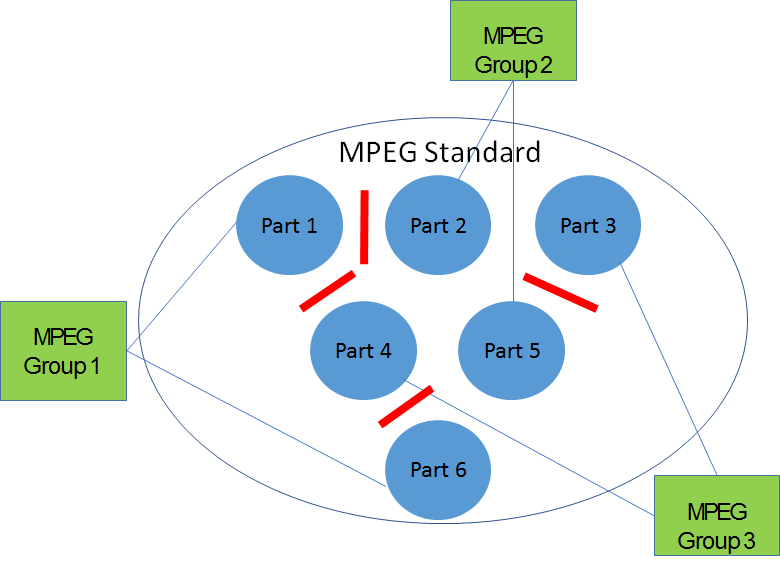
Figure 1 – Integrated MPEG standard suites
Its broad scope has thus enabled MPEG to create a digital media ecosystem composed of technology providers feeding their technologies into the MPEG technology repository via Calls for Proposals, that products manufacturers can integrate to service the MPEG client industries.
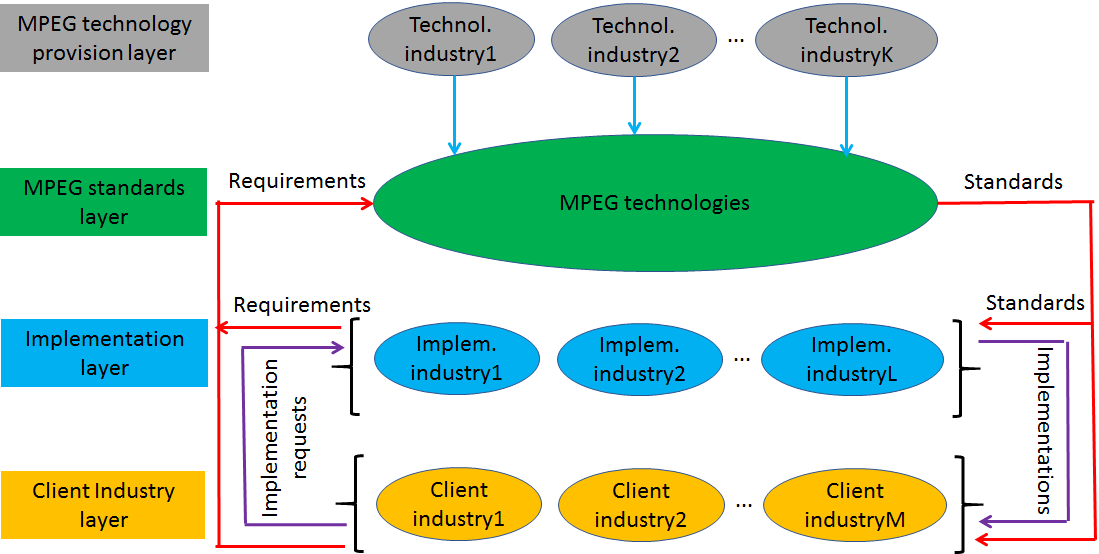
Figure 2 – The MPEG industries: Technology, Implementation and Client
MPEG’s ability to cover all the space defined by the scope has been a major element that has determined the success of MPEG standards. This was in place since the early MPEG days of MPEG-1, when the need to provide a complete specification prompted MPEG to also work on Audio and Systems issues, and of MPEG-2, when video distribution on analogue channels prompted MPEG to develop the famous Emmy Award recipient and long-lived MPEG-2 Transport Stream, and CATV applications prompted MPEG to develop the DSM-CC protocols.
Another strength is the fact that MPEG standards result from collaborative developments and are maintained by the MPEG “community”.
Weaknesses
Thirty-one years ago, when MPEG held its first meeting, companies were already applying digital technologies, but in an uncoordinated manner. However, when MPEG digital audio and video compression standards became available, they sold like hot cakes because market demanded the savings made possible by standard digital technologies and the new opportunities offered by MPEG standards. Today markets keep on demanding old forms of savings, but also new services enabled by new media technologies. The more complex technology scenario makes it increasingly difficult to understand which standards based on which technology are needed by industry.
Because MPEG is mostly a technical group, it is also difficult to have the appropriate number of market experts with the appropriate knowledge to develop the requirements for new projects.
Opportunities
The MPEG scope offers a very large number of opportunities for standardisation in the audio-visual domain, in the traditional space, in the new “immersive media space” and in the new non-media data compression space. Since digitisation is becoming more and more a buzzword, more industries are discovering the benefits of handling their processes with digital technologies. The large amounts of digital data so generated can benefit from compression, as I wrote in Compression – the technology for the digital age. Compression can be used to optimise and enhance their processes and provide, much as it happened for the media industries, unrelenting expansion to their businesses. This could happen any time soon in two other domains that MPEG has already tackled: genomic information (see Genome is digital, and can be compressed) and neural networks (see Moving intelligence around). In The MPEG frontier I have elaborated on some of the opportunities.
Threats
Data compression is important, and MPEG does offer plenty of solutions to achieve that in different instances. Data compression is a crucial enabling technology, but customers need more than that. This has been a recurring theme in all MPEG standards from the time (1990) MPEG realised that software could be used not just to run video and audio compression algorithms, but also as a way to specify the standard.
Industry has evolved a great deal since then. In some environments that MPEG could claim are part of its purview, the standard is just the software. Some organisations, alliances or even companies offer high-quality software without a textual specification. This means that, even if the software may be open source, the actual specification is practically “hidden”, and the reference software may easily become the only implementation, because it is “the specification”.
MPEG prides itself of its ability to produce bare-boned standards that specify the minimum, but is threatened by other entities who can provide packages whose completeness is not matched by MPEG specifications.
A related threat comes from the confusion generated by the fact that other standards organisation may produce standards on, say AR/VR, that appear to compete with MPEG compression standards. while they are at completely different levels.
A major threat is the possible change of mind on the part of ISO regarding the size of MPEG. A decision to split MPEG in its component elements would be a disaster because, as mentioned above, MPEG acts as an ecosystem of groups competent on a wide range of interacting technologies assembled to produce integrated and coherent standards. Note that MPEG experts do not feel uncomfortable with the size of the group because the wide scope gives them the opportunity to be exposed to more views, issues and opportunities.
Business model
MPEG is not a for-profit entity. However, it operates on the basis of an implicit “business model” that has powered its 30 year-long continuous expansion. In plain words
- MPEG develops high-performance standards using the best technologies available, as offered in response to Calls for Proposals (CfP);
- Patents holders receive royalties through mechanisms that do not involve MPEG and usually re-invest those royalties in new technologies;
- MPEG develops new generations of MPEG standards using those new technologies.
Strengths
The very existence of MPEG with a growing membership is a proof that the MPEG business model is valid because excellent MPEG standards remunerate good IP and royalties earned from existing standards fund more good IP for future standards.
Weaknesses
All good games must come to an end. The end in MPEG has not come yet, but difficulty in obtaining licensing for some MPEG standards (see, e.g. A crisis, the causes and a solution) show that the MPEG business model is no longer as strong and immediately applicable as it used to be.
There is resistance to changes even of a limited scope to the MPEG business model. Therefore, the MPEG business model is weakening because it has not been allowed to adapt.
Opportunities
I have tried to highlight some solutions in Can MPEG overcome its Video “crisis”?, IP counting or revenue counting? and Matching technology supply with demand make some proposals that provide an opportunity to enhance the MPEG business model without reneging its foundations.
Threats
The threats are concrete and serious. MPEG may become irrelevant if it stays exclusively with an outdated business model. But MPEG is not a company, it is an organisation that operates based on rules established by the appropriate authorities within ISO and where decisions are made by consensus.
Conclusions
This is just the beginning of the SWOT analysis. Very soon I will publish an article on Membership, Structure and Leadership.
Posts in this thread
- No one is perfect, but some are more accomplished than others
- Einige Gespenster gehen um in der Welt – die Gespenster der Zauberlehrlinge
- Does success breed success?
- Dot the i’s and cross the t’s
- The MPEG frontier
- Tranquil 7+ days of hard work
- Hamlet in Gothenburg: one or two ad hoc groups?
- The Mule, Foundation and MPEG
- Can we improve MPEG standards’ success rate?
- Which future for MPEG?
- Why MPEG is part of ISO/IEC
- The discontinuity of digital technologies
- The impact of MPEG standards
- Still more to say about MPEG standards
- The MPEG work plan (March 2019)
- MPEG and ISO
- Data compression in MPEG
- More video with more features
- Matching technology supply with demand
- What would MPEG be without Systems?
- MPEG: what it did, is doing, will do
- The MPEG drive to immersive visual experiences
- There is more to say about MPEG standards
- Moving intelligence around
- More standards – more successes – more failures
- Thirty years of audio coding and counting
- Is there a logic in MPEG standards?
- Forty years of video coding and counting
- The MPEG ecosystem
- Why is MPEG successful?
- MPEG can also be green
- The life of an MPEG standard
- Genome is digital, and can be compressed
- Compression standards and quality go hand in hand
- Digging deeper in the MPEG work
- MPEG communicates
- How does MPEG actually work?
- Life inside MPEG
- Data Compression Technologies – A FAQ
- It worked twice and will work again
- Compression standards for the data industries
- 30 years of MPEG, and counting?
- The MPEG machine is ready to start (again)
- IP counting or revenue counting?
- Business model based ISO/IEC standards
- Can MPEG overcome its Video “crisis”?
- A crisis, the causes and a solution
- Compression – the technology for the digital age
